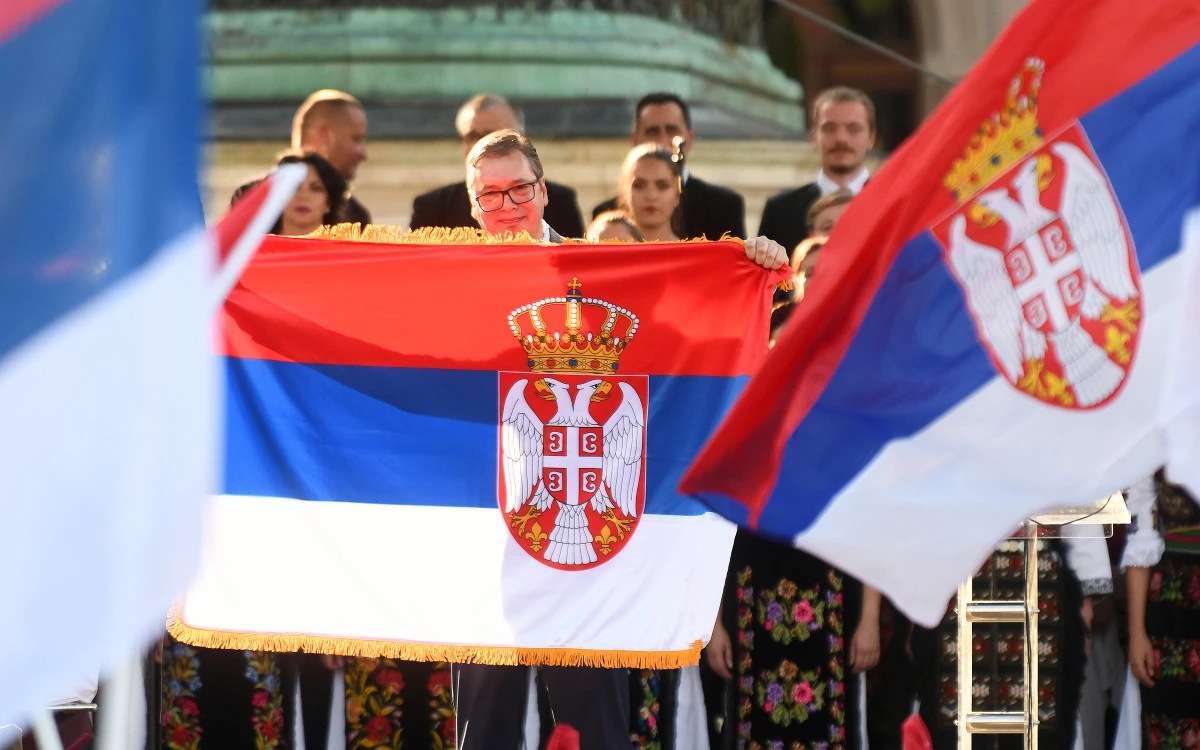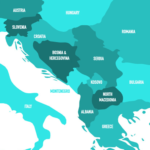The first All-Serbian Sabor (Assembly) called “One Nation, One Council – Serbia and (Republika) Srpska” was held a few days ago, but lively discussion around the event is still rattling. The main question commentators are trying to answer is how dangerous is this initiative launched by Belgrade?
“Road map” for Serbs
The central event of the All-Serbian Sabor was the adoption of the 49-point Declaration on the Protection of National and Political Rights and the Common Future of the Serbian People. The document is yet to be ratified by parliaments of Serbia and Republika Srpska but it has already fulfilled its main role of a political manifesto.
The meeting in Belgrade was not reserved to passing the Declaration. On the event’s sidelines, a prayer service was held in the St Savva Cathedral, as well as performances by folklore bands, a ceremonial reception of the Speaker of the Parliament of Serbia, an overflight of Serbian warplanes, a meeting of the presidents of Serbia and Republika Srpska, Aleksandar Vučić and Milorad Dodik, with Serbian veterans of the wars of the 1990s…
The president of the veteran organization of Republika Srpska said the Sabor was intended to show the unity and harmony of all Serbs and the direction they should move in the future. The initiators of the First All-Serbian Sabor attempted to rally the Serbs and highlight the relevant course. The declaration passed by the All-Serbian Sabor was conceived as a tool for achieving these goals, as a “road map” for Serb leaders in the region and every representative of the Serbian people, wherever they live.
The Declaration on the Protection of National and Political Rights and the Common Future of the Serbian People proclaims the unity of all Serbs, promoting the idea of a collective identity that goes beyond state borders. The “Serbian world” concept, which was long seen as something purely virtual, materialized in the Declaration in the form of formulated sentences, starting to take concrete shape. The Serbian language, culture, traditions, the Serbian Orthodox Church and a purely Serbian view of historical events, including modern history (for example, “there was no genocide in Srebrenica”), are defined as key markers of belonging to the Serbian people, the pillars of what is referred to as “Serbianship”.
The declaration describes the “Serbian World” in sufficient detail, while avoiding the use of this particular term. In fact, it is about declaring a cross-border community of Serbs, with Vucic and Dodik positioning themselves as their leaders.
Concern for the region
However, the content of the Declaration was not limited to outlining the “Serbian World”. A large part of the document is devoted to political issues, the situation of Bosnia and Herzegovina related to Republika Srpska, and the issue of Kosovo and Metohija. (By the way, this region, as laid down in the Declaration, should be called exactly that – Kosovo and Metohija (KiM). The issue of the name is dwelled upon separately).
In general, the points devoted to RS and KiM offer no surprises. It emphasizes the need to comply with the letter of the Dayton Agreement and advocates for more extensive rights for the RS than provided for by the legislation currently in force in BiH. Also, the document emphasizes that Kosovo belongs to Serbia.
Neither in the Declaration nor during the Sabor in general did the issue of Montenegro receive as much attention as did KiM and RS. However, a powerful delegation of Serbs from Montenegro (it should be noted that the term “Montenegrin Serbs”, as well as any other regional adjectives to the word “Serbs” was banned at the Sabor) and the statements voiced by Parliament Speaker Andrija Mandic served as an eloquent complement to the official messages coming from the Assembly in Belgrade.
The combination of the strategy of building a single cross-border Serbian community and action plans for the region created a powerful déjà vu effect. The memorandum by the Serbian National Academy of Sciences, Milosevic’s speech at Gazimestan, and the general bloom of the Great-Serbian idea in the late 1980s and early 1990s – this is exactly what those who criticize the Belgrade assembly mention most vehemently. The direction of movement set by the Sabor unnerved many in the region and beyond.
One might get the impression that the initiators of the Sabor actually expected that the event would have precisely such an effect. That is why the main speakers at the gathering emphasized peace – neither the documents passed by the Sabor nor the speeches by Serbian leaders contain no calls for violent action. Also, there was no talk of regaining control over Kosovo by force or of the RS’s secession from Bosnia and Herzegovina at any cost.
“More of us died in the 20th century than all other nations in the whole world. Let’s try to save the heads of our children through reasonable policies, try to preserve peace and freedom and achieve our vital national goals and interests,” said Vučić.
But memories of the past war turned out to be just too fresh, and the trust in the Serbian leaders – too low for the audience outside the circle of Vučić and Dodik’s supporters to be happy with the announced development strategy of the “Serbian World”. Those who consider the Sabor and the ideas they promulgated to be a reincarnation of the ideology of “Greater Serbia” took the Belgrade gathering as a wake-up call that signaled a threat to peace in the region, and as an announcement of an even greater threat in the future.
Greetings from Putin
What can be objected to those who have voiced alarmist assessments of the All-Serbian Sabor?
First, within Serbia, there is opposition to the current policy of the government in Belgrade. Political opponents of the Serbian authorities were critical of the plans for holding the Sabor in the first place and snubbed the relevant events. That is, political pluralism still exists in Serbia, and there is a chance that the Serbian public will not allow the worst scenario to be implemented.
Secondly, not all Serbian minorities from the ex-Yugoslav republics supported the idea of ”rallying around Belgrade”. Indeed, the Serb delegation from Croatia, as claimed by both Serbian and Croatian media, didn’t come to the Sabor at all. This means that ethnic Serbs holding Croatian passports feel they don’t belong to the “Serbian World” and are not going to revive the irredentist ideas of three decades ago within a NATO and EU member state.
It should be recalled that not only Croatia is a NATO member state, but also Montenegro. A NATO contingent is present in Kosovo, and an EU military mission – in Bosnia and Herzegovina. Therefore, the format of building the “Serbian World” by definition will not be able to follow the pattern of 1991. However, a hybrid format is possible.
Hybridity in this case will, first of all, implies the active promotion of the idea of the “Serbian World” in the humanitarian areas – informational, cultural, educational, and academic (historical). This work will take place in close coordination with the Serbian Orthodox Church. The goal will be to rally Serbs around the “Serbian secular” ideology outlined in the Declaration. A separate goal for Serbs beyond Serbia will be to prevent their assimilation, to preserve the “approved” Serbian identity in any of its manifestations – faith, language, and historical narratives, including the assessment of the most important historical events of recent history.
Other goals – the actual independence of Republika Srpska and Serbian Kosovo – would involve diplomatic steps and lobbying on international platforms to promote Belgrade’s position, but without military force applied.
The aggravation of the confrontation in the Western Balkans and the transition from the “cold” methods of building the “Serbian world” to the “hot” ones would take place only in one case, which would be direct intervention on the part of Russia that would require another instability hotbed in Europe.
By the way, Dodik arrived in the Serbian capital directly from St. Petersburg, conveying to the participants of the Sabor greetings from Vladimir Putin, with whom he had met ahead of the event.



